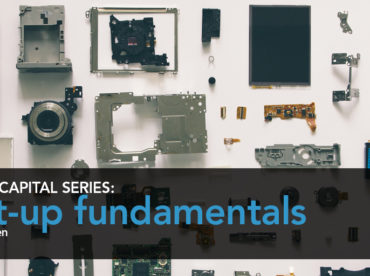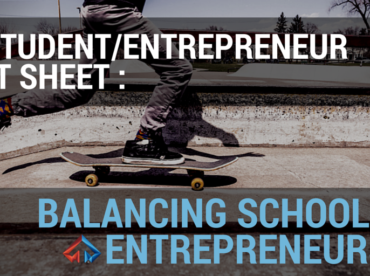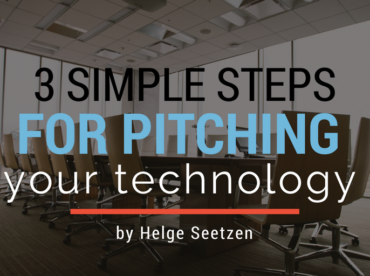As an accelerator that focuses on working with university inventors to build great products, and who invests heavily in young talent, the role of a university education is a constant source of internal conversation. As a result, I’ve taken quite an interest in the Thiel Fellowship; Peter Thiel’s idea was to offer $100k to high profile students if they would drop out of school and start a company. As a recent article notes, three years later none of it went anywhere and a lot of them are back in school.
This hit on one of the central elements of a recent lunch time discussion at TandemLaunch: As “uncool” as it is, getting a degree is a good idea (See my post on 10 reasons entrepreneurs should stay in school). Yes, there are guys like Mark Zuckerberg who can drop out of school and build a giant venture right on their first try. But to conclude from that that degrees and gradual brand building isn’t the right strategy, is like saying that safety belts aren’t necessary because once in a while somebody survives a crash without wearing a belt – supported by anecdotes but statistically rubbish (looking at you there, Peter Thiel – holder of a Stanford Law degree by the way…).
All that said, there is no reason why a good education should compete with entrepreneurial activities. Why not do both? One of our Entrepreneurs-in-Residence brought up the very interesting point that “exits” have been a major part of my personal brand development. That’s very true. The interesting thing, in my opinion, is that the initial brand value doesn’t really seem related to be the magnitude of the exit but just the event itself. For example, my first venture, Sunnybrook Technologies, was far from a big success but enough to demonstrate to investors that we could “handle” a bigger amount of funding for BrightSide Technologies which, in turn, had a much bigger impact. Mark Suster has a great blog post about Learning vs. Earning in a startup, with the central recommendation being to focus on Learning in your first venture, and then leveraging this into Earning. I would add “brand building” to the “learning” category of this approach. Let me explain.
Startups require three P’s: People, Product and Pesos (money). Miss one of those three and you don’t have a company, but rather a hobby. Pesos generally come once you have good People and good Product so those two are the first hurdle. Unfortunately, in a lot of ventures, like Sunnybrook, you need Pesos to build Product which creates a chicken-and-egg problem. My mentor, a very seasoned serial entrepreneur, had a very elegant solution: bring in a co-founder with money. My first instinct was to object – why should we give a co-founder equity stake to some guy who hadn’t been there for the preceding two years of research and wasn’t going to work on the project just because he had a bit of cash? I will eternally be grateful for my mentor’s simple answer: “Because he is willing to give you that bit of cash!” (said in a tone that ended the discussion right there).
Don, the guy with the money, became an equal co-founder and dropped in $300k (making him the largest individual shareholder of Sunnybrook after that money converted to equity). Add in the university equity and I was down to 12% of Sunnybrook before we even started fund raising (and so was my mentor). Neither of the two gained much from Sunnybrook, (though in good faith we gave all Sunnybrook contributors some equity in BrightSide so everybody had a very nice economic return a few years later – good faith relationships are a topic for yet another post).
I had a similarly weak economic outcome, but unlike them, I had a hugely positive overall return: brand value. You see, the Pesos allowed us to build the Product and attract high quality People. And that in turn gave me the opportunity to overcome the stigma associated with every young first-time entrepreneur everywhere: cockiness, naiveté, unreasonableness in business engagements, inability to listen to “sage advice”, fickleness, lack of personal management skills (managing up, sideways or down), etc. Every seasoned entrepreneur and investor in the world, including me today, will ascribe those attributes to every young first time entrepreneur – mostly in the form of involuntary bias. Of course that’s not always true, but given the statistics, it is a very good assumption.
Sunnybrook gave me the opportunity to demonstrate, and codify via the end outcome, that I was able to work in a team, was able to make reasonable deals, was reliable, etc. The creation of BrightSide, and my role in it, was a direct consequence of that shift in branding. Suddenly, Pesos and world-class People were available without needing the same large equity grants. Moreover, I was in a position to truly be a peer to the other senior leaders in the company despite the 20+ year experience gap. I doubt that I got that much smarter from 2003 to 2004 (Sunnybrook vs BrightSide), so much of this is just the result of a shift in brand.
This article about the first 21 employees of Google also has an interesting perspective on the career-accelerating power of initial success: http://www.businessinsider.com/googles-first-employees-2013-9?op=1
And of course the brand leverage didn’t stop there: Raising the first $300k of Sunnybrook took the lion’s share of the company and acceptance of a role in a very broad leadership group (being a peer with 50% of the company). Raising the first $600k of BrightSide took less than 20% of the company and a role in the top 10% senior leadership of the company. Raising the first $1.5M at TandemLaunch took zero equity and the top role in the company. At a rate of one startup every 3 years, I still have a dozen or so ahead of me, so who knows where this trend is heading. And as silly as it sounds, Don probably has more to do with it than I ever gave him credit for.



